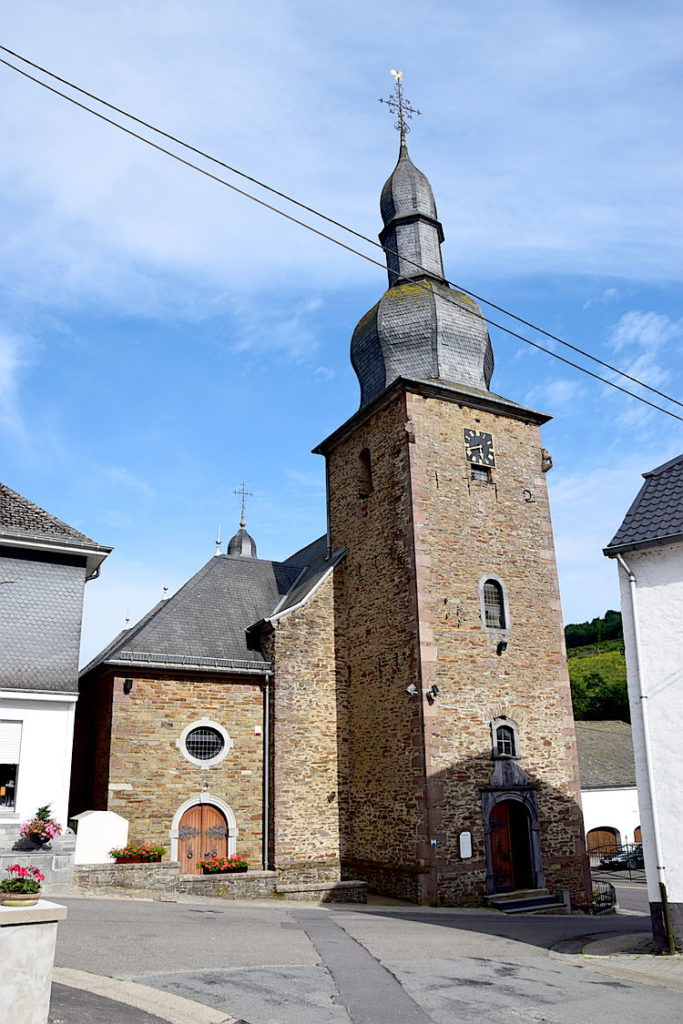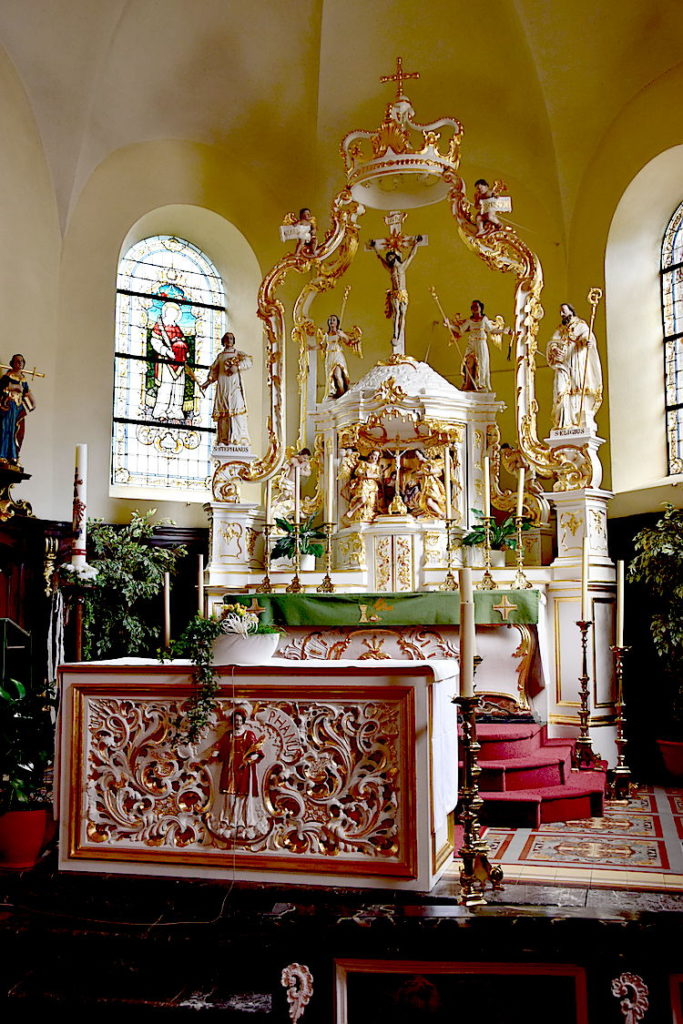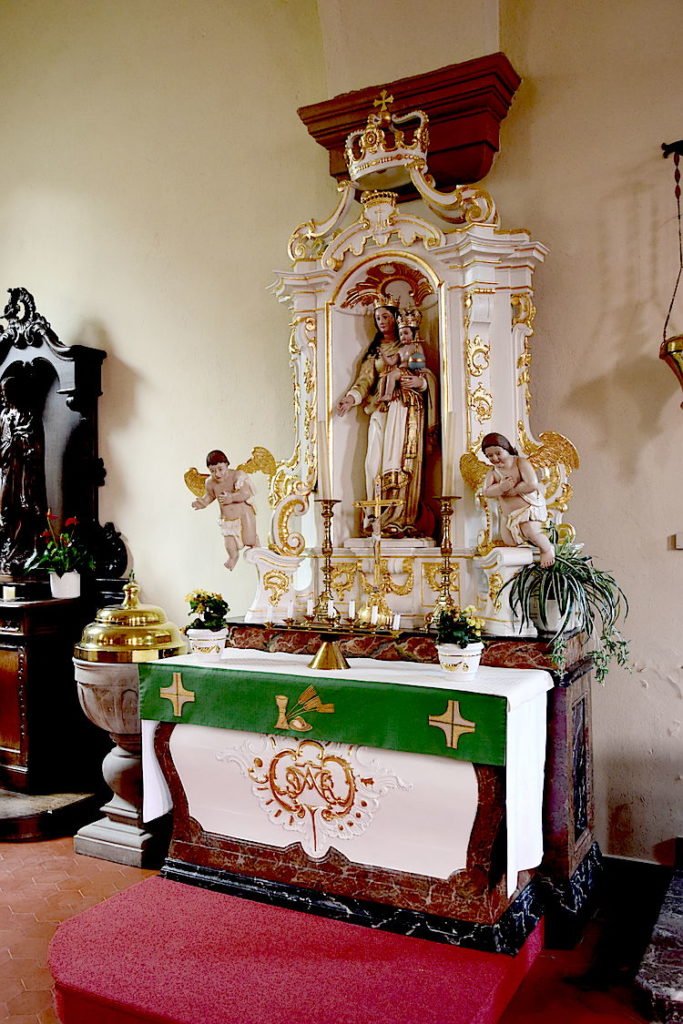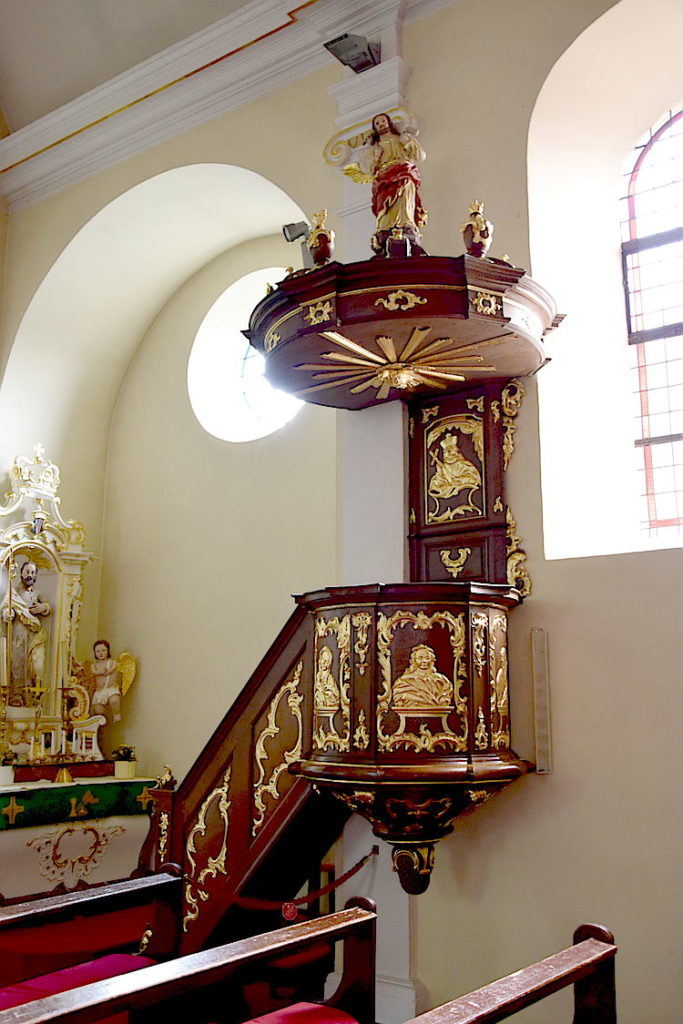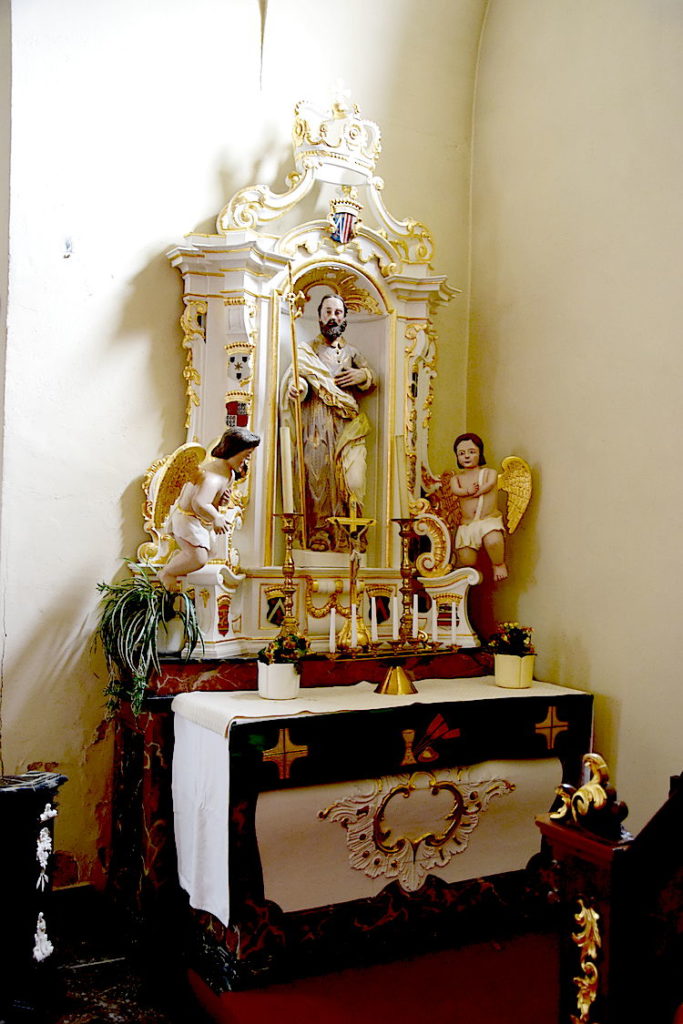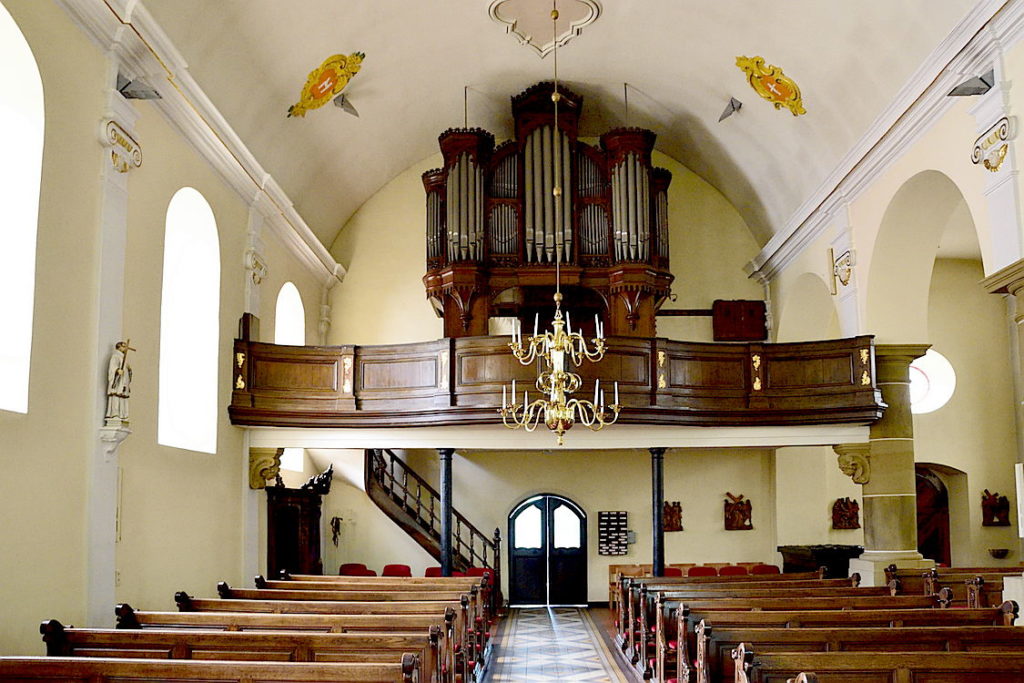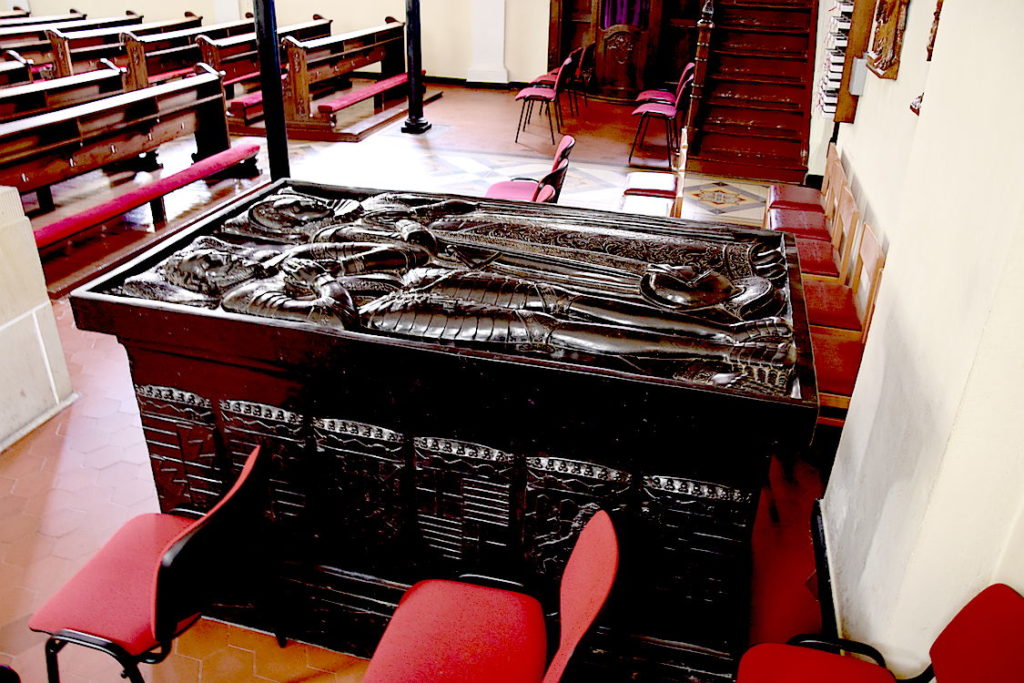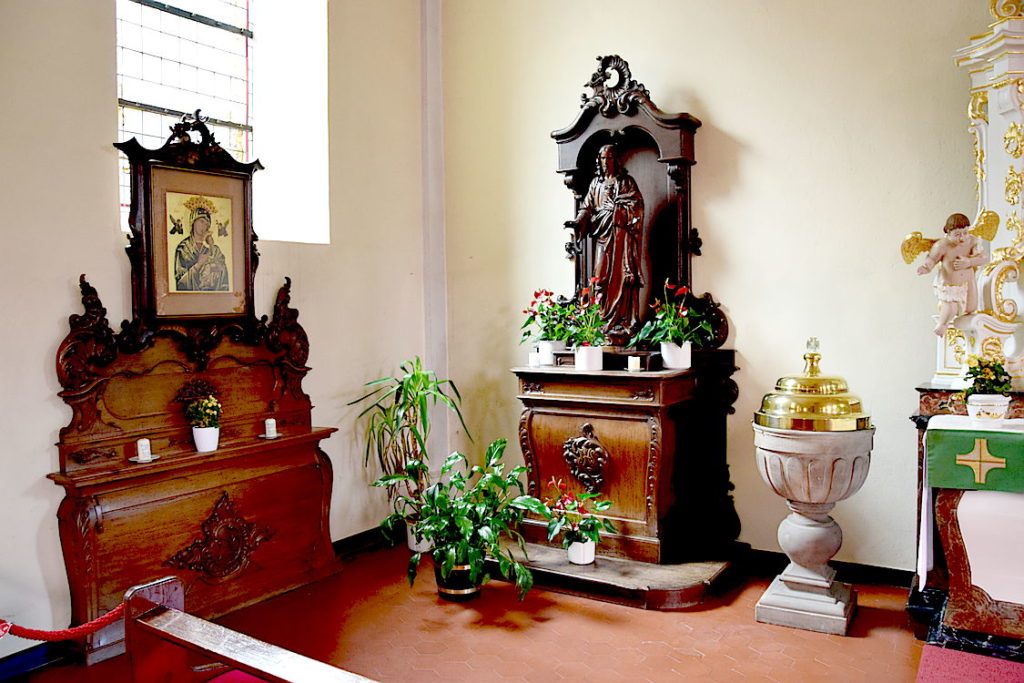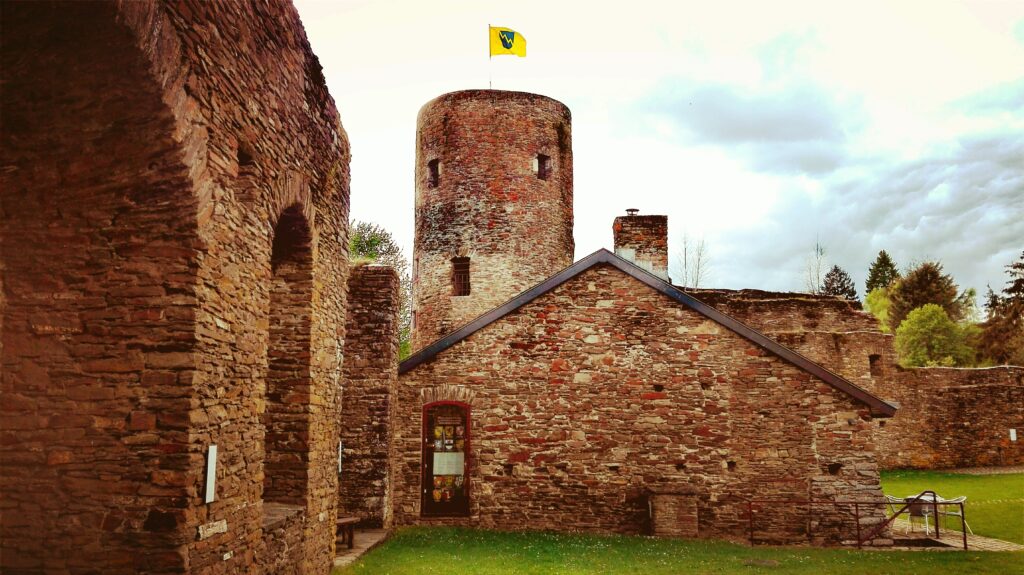
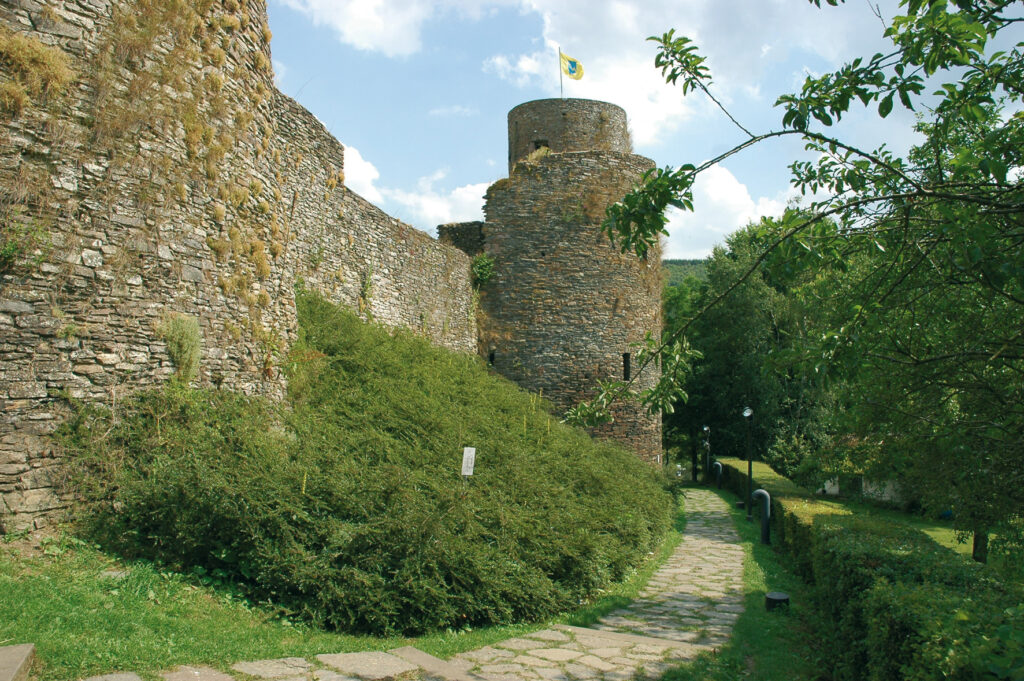
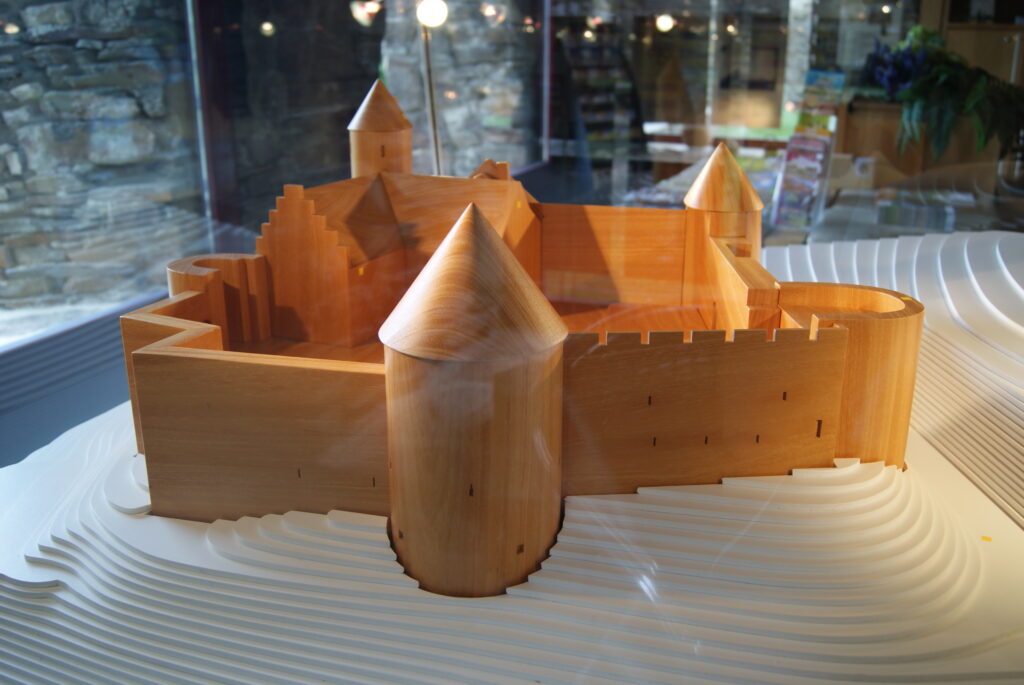
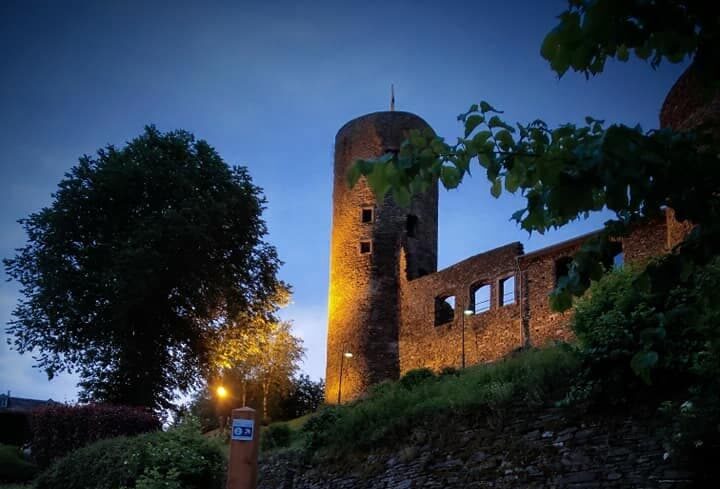
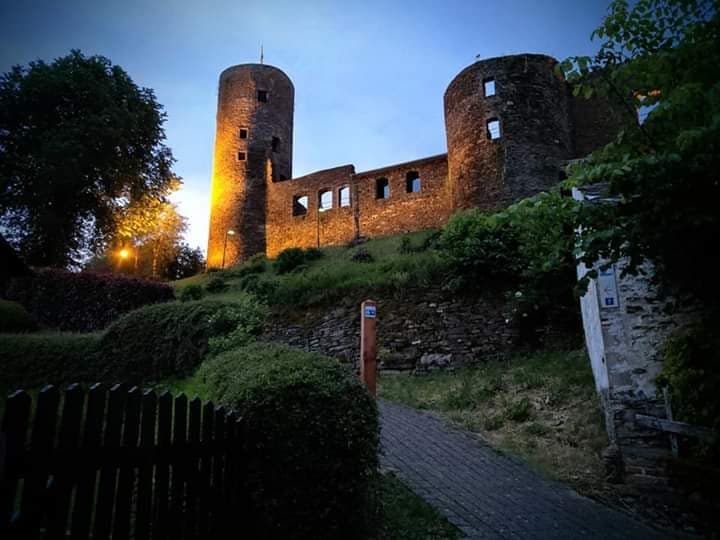
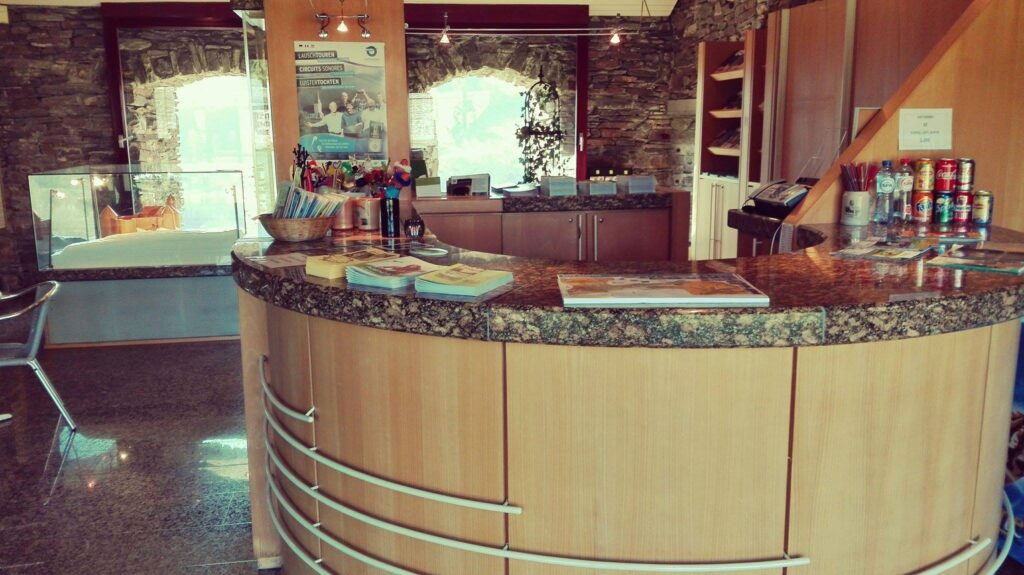
The Castle Ruin
The castle of Reuland is one of the most beautiful and largest castle ruins in the Ardennes.
The present ruin is only a small part of the former castle.
The massive walls that once enclosed the outer castle courtyard and reached into the Ulft valley have disappeared. The walls still standing today once housed the dwelling of the Reuland lordship.
Where today only the ruins of the castle stand, the Romans had already built a fort. The Franks turned it into a royal castle.
At that time, the kings did not live in a fixed residence like today, but they moved around the country and took different castles as their residence.
Charlemagne also stayed at times in the castle in Reuland. After the death of Charlemagne, the castle and its surroundings became the property of the Burgrave family.
Since the castle was already destroyed by the Normans and the Hungarians in 882 and 961, in order to prevent further atrocities, the castle was rebuilt with very strong towers and solid walls. So, the big tower ( donjon ) , already stands since the 10th century, the small tower right next to the entrance is even older. Its foundation walls date back to Roman times.
Who lived here?
A brave family inhabited the castle: the lords and counts of Reuland. They also gave the name to the village and the municipality.
The Reulanders were considered to be loyal and faithful. They took part in many crusades and gained immortal fame everywhere. They were always in the Emperor’s entourage.
Probably the most famous Reulander was Dietrich von Reuland. He participated in King Barbarossa’s 3rd crusade. Because of his bravery he received the nickname “the Lion”. He died a hero’s death in the battle of Akkon in Jerusalem, after leading the army to victory.
With the death of Arnold of Reuland, the line of Reuland ended in 1313. The castle and its lands became the property of the Count of Blankenheim. These counts later sold everything to John the Blind the Count of Luxembourg.
After his death he transferred everything to his son Wenceslas I. who in turn bequeathed everything to his son Wenceslas II. In 1384, Wenceslas II gave Reuland Castle to his advisor Edmund von Engelsdorf as a fiefdom and made him the hereditary chamberlain (administrator) of the Duchy of Luxembourg and the County of Chiny. Since that time, the Lords of Reuland were always hereditary chamberlains of these lands.
The legend still goes that the key to Reuland Castle also opens the gates of the city of Luxembourg.
Since 1410 the most famous family “von Pallandt” has been in possession of Reuland Castle, for more than 200 years they ruled in Burg Reuland. In the 16th century they transformed the fortified castle into a representative seat of power. It was now a palace-like complex with gardens and ponds.
The last of this dynasty was Balthasar von Pallandt, who died in 1623. His wife Elisabeth von Mylendonk, Countess of Drachenfels and Lady of Meidrich on the Lower Rhine, had already died in 1614.
These two found their final resting place in the church in Reuland. Their tomb made of black marble still stands there today.
When Ottilia von Pallandt died in 1666, there were no more descendants, and so the husband of Balthasar’s granddaughter, Count Johann von Berghes, became the new lord of Reuland.
When the Berghes line also ended without children, the castle reverted to Luxembourg, which now had it governed by an administrator. The administrator fled when the French troops completely destroyed the castle during the French Revolution.
By then, the castle had already been completely destroyed and rebuilt 2 times. But this time it was released for demolition in 1804. The ruins and the property belonging to it, passed to the Mayeres family from Reuland, who later donated it to the municipality.
In 1901 and 1902, the Prussian Rhine Province took care of the old walls and carried out some restoration and security works. Since 1923, the castle has belonged to the Belgian state. Since 1988, the castle has been gradually restored.
Today it is owned by the German-speaking Community and is a listed monument.
The history of the castle is presented in detail in the castle's information pavilion, which still partly consists of the walls of the residential building from 1625-1648.
Visit Wallonia with VISITWallonia.be
Discover ecotourism in Wallonia, with getaways that enhance the Walloon landscape and heritage, such as a visit to the ruins of Burg-Reuland castle. The VISITWallonia.be Pass, free and accessible online, lets you explore activities and accommodation in and around the region, while keeping yourself as well-informed as possible. However, nothing beats getting in touch with the service provider via the contact details on the platform before you travel, to benefit from travel advice.
This tool is compatible with smartphones and any Belgian internet provider, and a paper version of the pass is available from Wallonia’s Maisons du Tourisme.
The aim of this kind of initiative is to promote tourism in Wallonia for new arrivals to Burg-Reuland and the rest of the region. It provides a positive social, environmental and cultural dynamic.
St. Stephanus parish church of Burg-Reuland
The carefully renovated church in Burg-Reuland impresses visitors with its uniform appearance, with the white lacquered high altar with its gilded ornaments immediately standing out. The mensa is adorned with a heart entwined with thorns and is crowned by a cross with angels and instruments of the Passion. The free-standing figures of St. Stephen and St. Eligius can be found on the base pieces of the reconstruction. The new altar table shows a depiction of the patron saint St. Stephen. The two side altars are dedicated to the Virgin Mary and St. Joseph.
The chapel in “Rullant” was first mentioned in 1213 in a document by the Benedictine abbot Alard from Stavelot-Mamedy and in 1336 it was called the “Chapel of Our Lady in the Ulftal” and was later also dedicated to St. Stephen, on whose feast day a market was held. The chapel originally belonged to the higher-lying St. Hubertus parish of Weweler.
Ancestral coats of arms and tombstones refer to important foundations and patrons. The high grave of Balthasar von Pallant (+ 1625) and Elisabeth von Millendonck (+ 1614) is one of the most outstanding artistic monuments in East Belgium and has been the subject of numerous art historical studies. Since the construction of a side aisle in 1912, it has been located in the first western arcade floor, having been taken apart and walled into the north wall of the church the century before. Even in broad daylight, it lies in a subdued light and lends the church a quiet splendor. The sarcophagus is made of Belgian slate marble and bears a cover plate with a bas-relief of the figures of the couple resting in prayer, their hands crossed in front of their chests.
A key hangs from the knight’s armor strap as a sign of the hereditary chamberlain of Luxembourg; at his feet are gloves and a helmet. The woman wears a distinctive millstone collar and a coat made of fur elements. Shiny and matt finishes alternate. Inscriptions on the sides of the head and feet contain the personal details of the two dead as well as several family coats of arms.
Source: Churches and chapels in East Belgium by Freddy Derwahl and Johannes Weber

Former Castle House
The former castle house below the church is an imposing house built for the Van Orley family, as evidenced by the crowning of the entrance with a coat of arms and the year. The house has a wide, harmonious facade made of plastered quarry stone. All frames of the openings are made of right slate, whereby the baroque door frame with the skylight is particularly tastefully decorated. The cellars of the building as well as the fireplace in the kitchen, the fireplace mantle and the paneling probably come from a previous building.
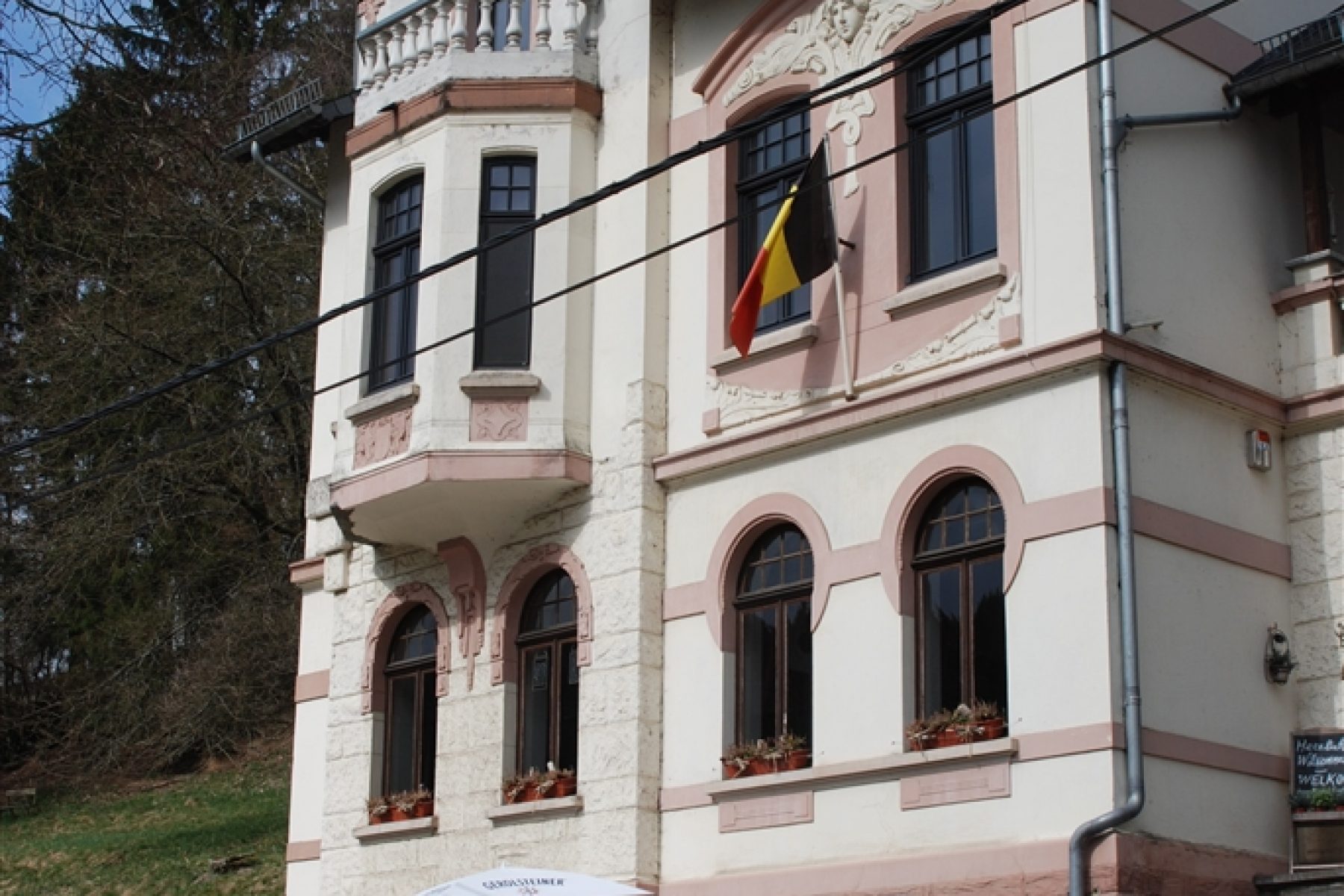
Bergkapel
This plastered quarry stone house was built in 1902 by the architect Wilhelm Kloss. The decorative elements of the terracotta and white-colored front facade are particularly eye-catching. They are typical elements of Art Nouveau (women and men masks, garlands and plant motifs). This art movement breaks with the frozen forms of historicism and draws its inspiration from the forms of nature: flowing lines, arches, waves and arabesques. This is how floral ornaments become extremely popular.
No other house of this type is known in the southern part of the German-speaking Community.
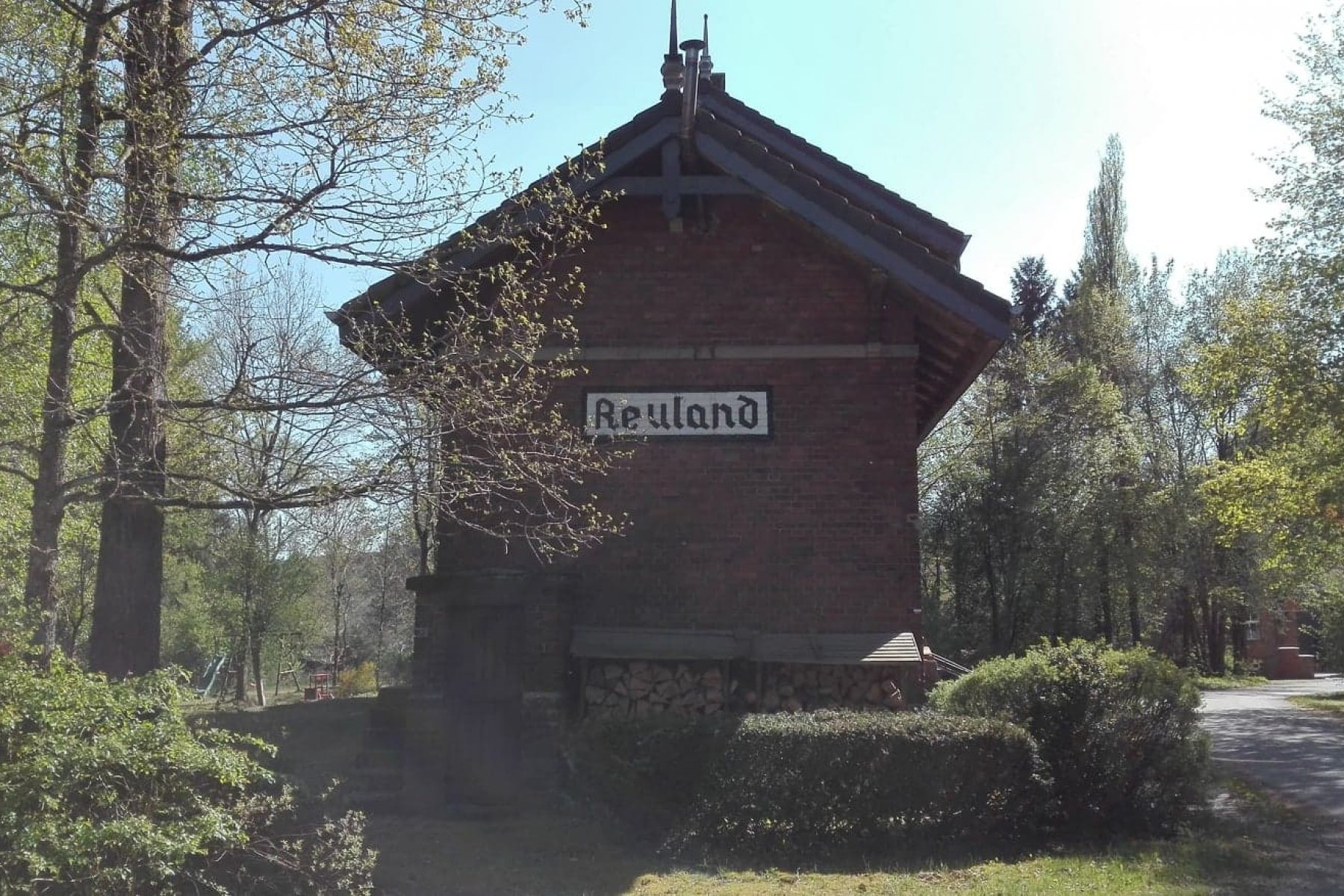
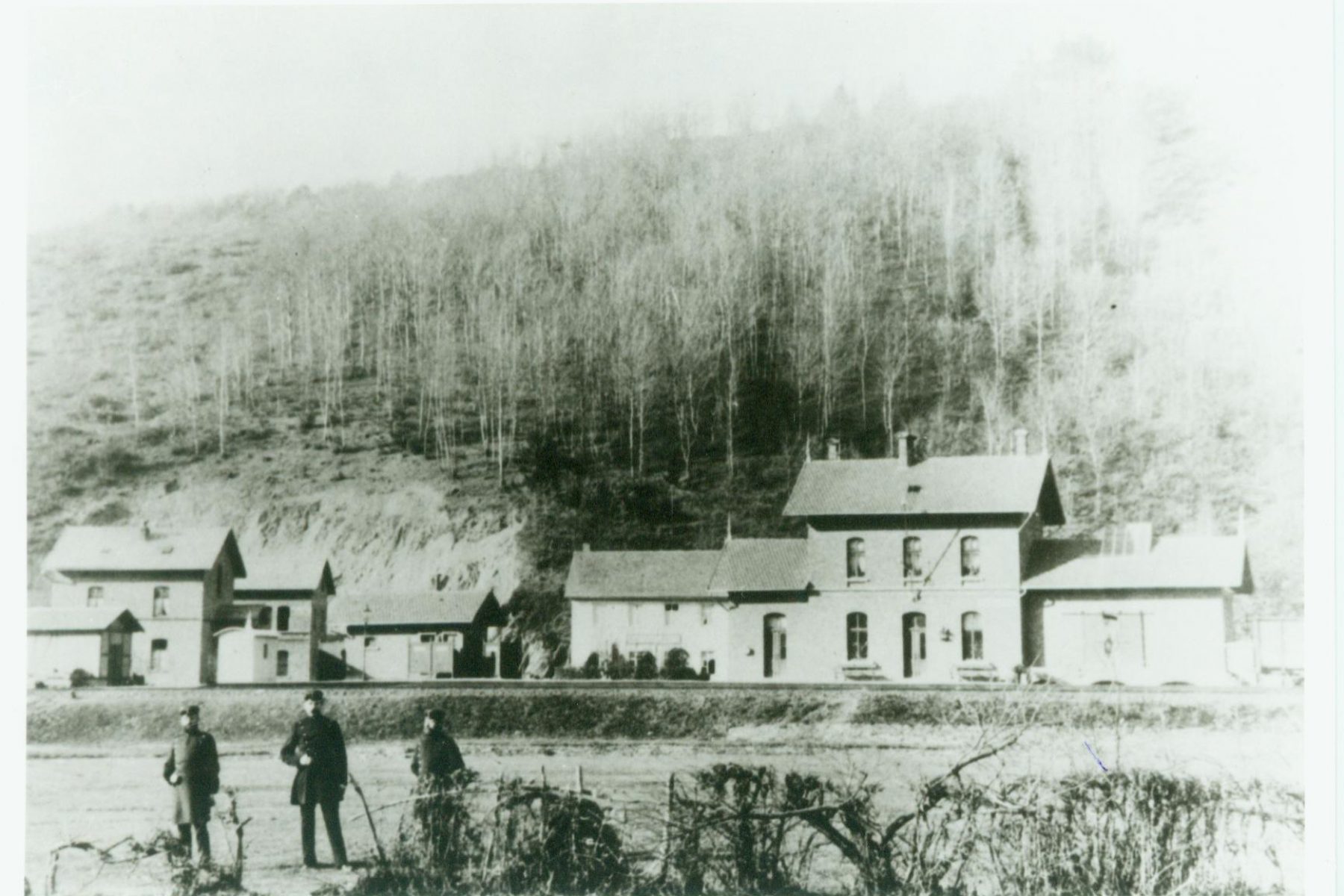

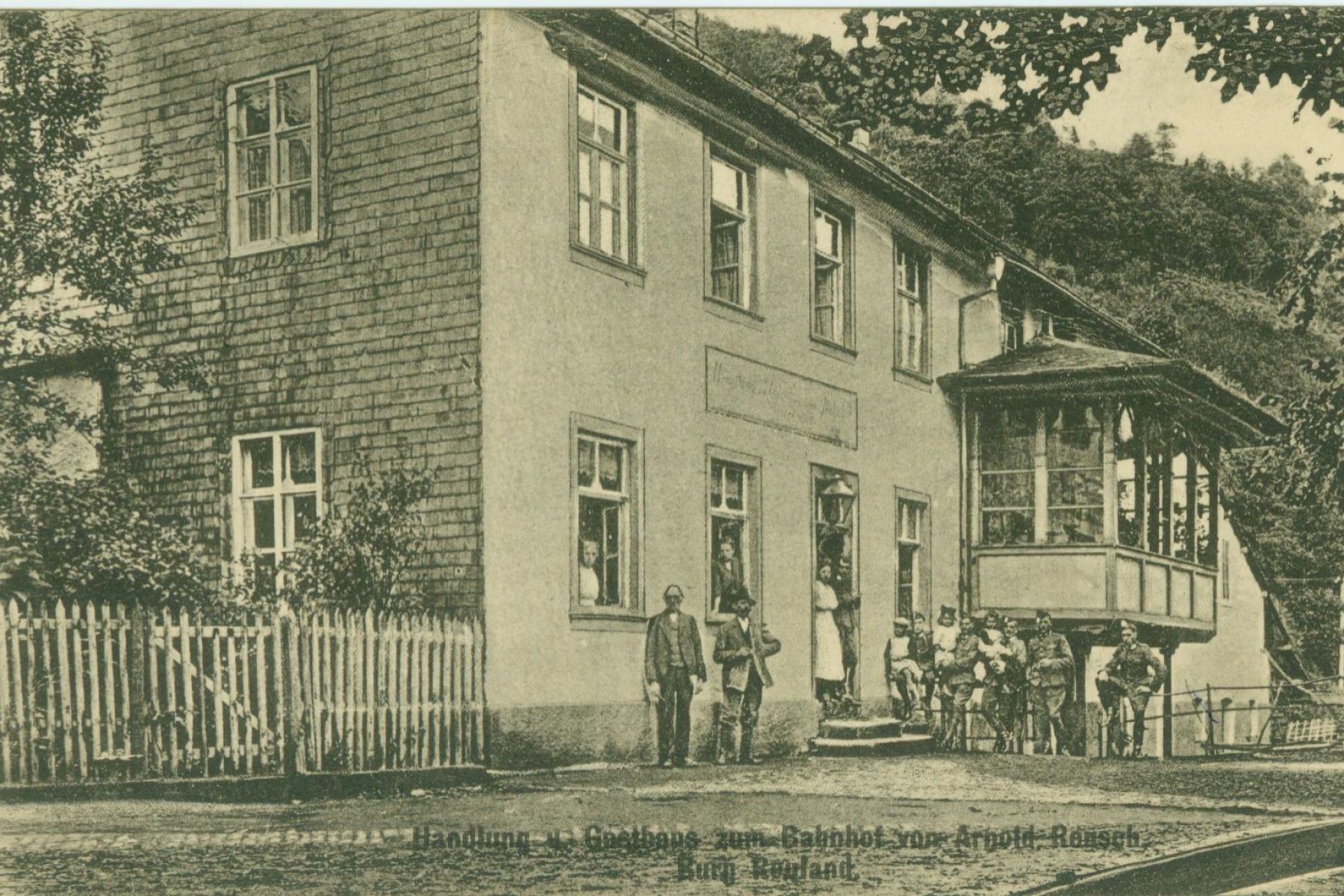

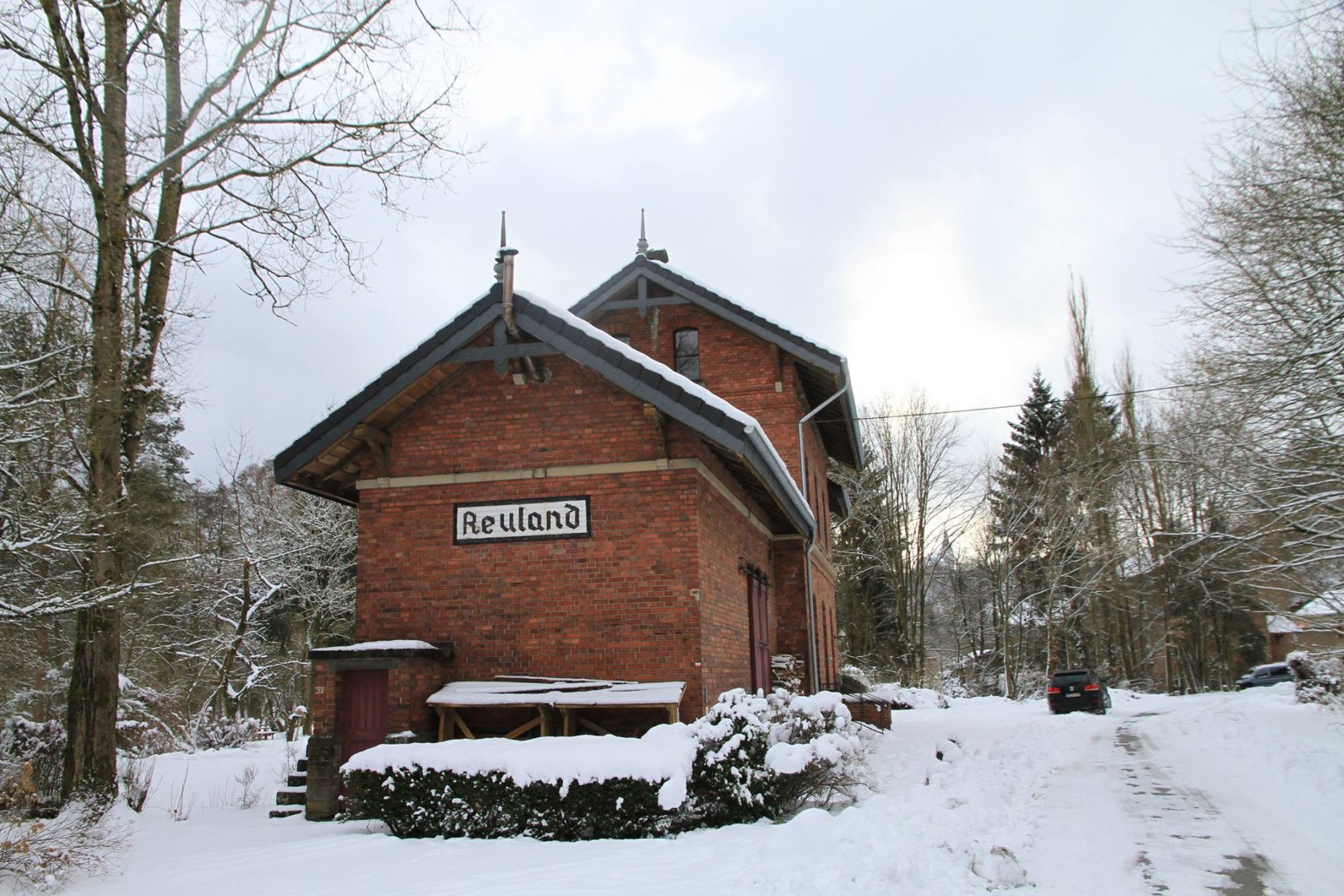
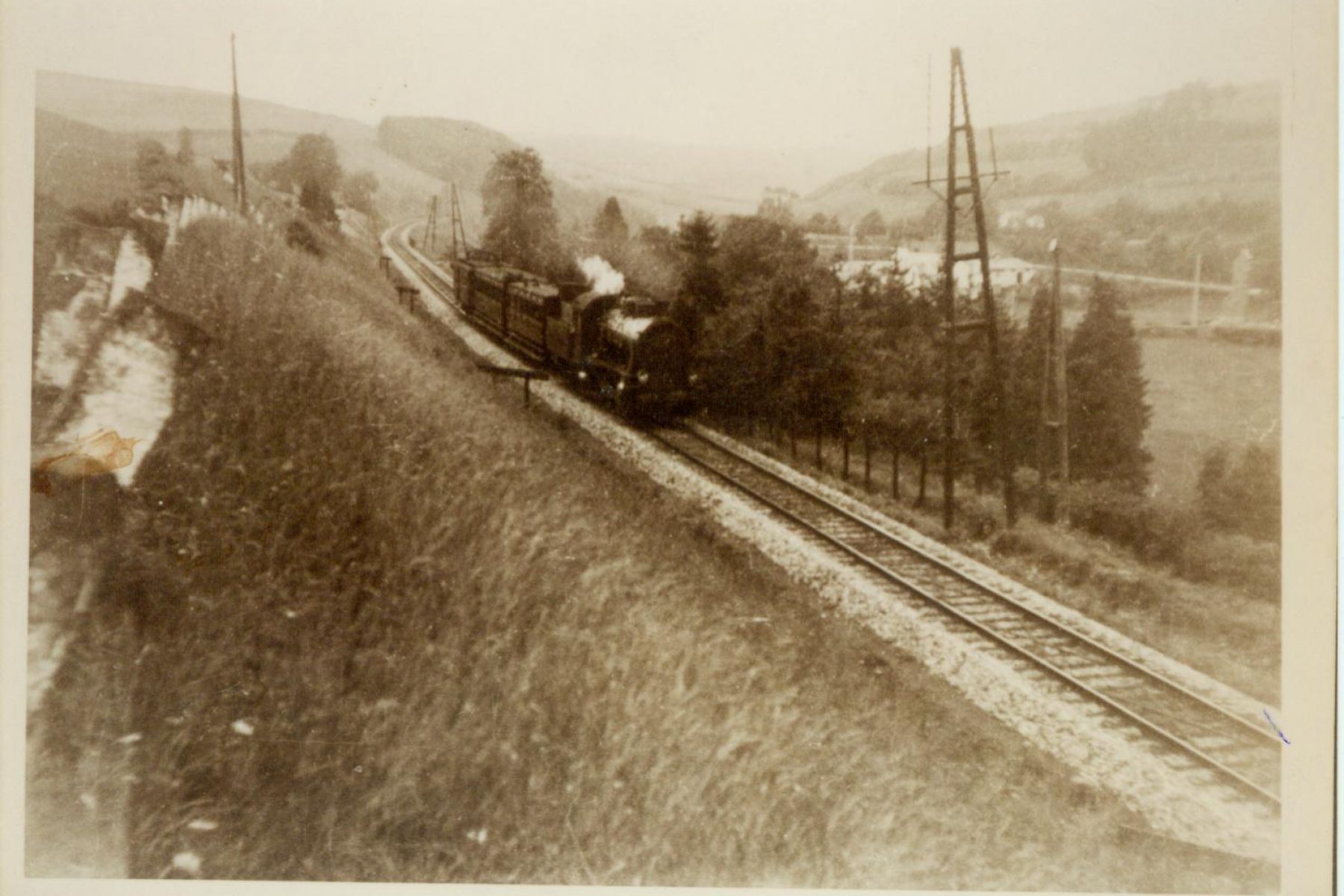
Train Station Burg Reuland
On November 04, 1889, the 23 km long railway track between Lommersweiler and Troisvierges (L) was opened. This track was part of the railway connection between Aachen (D) and Luxembourg, which passed through St.Vith and Burg-Reuland. A special highlight of the opening celebrations was the race between the stagecoach (mail carriage) and the locomotive of the train. The last cargo train passed through Burg Reuland in 1962. Over the years, nature has reclaimed the railway track and, since 2003, it offers hikers and cyclists a unique setting in the form of a high-quality cycling and hiking trail.
MUSEUM BURG-REULAND
Von-Orley-Straße, 24, Burg Reuland, 4790 Burg-Reuland
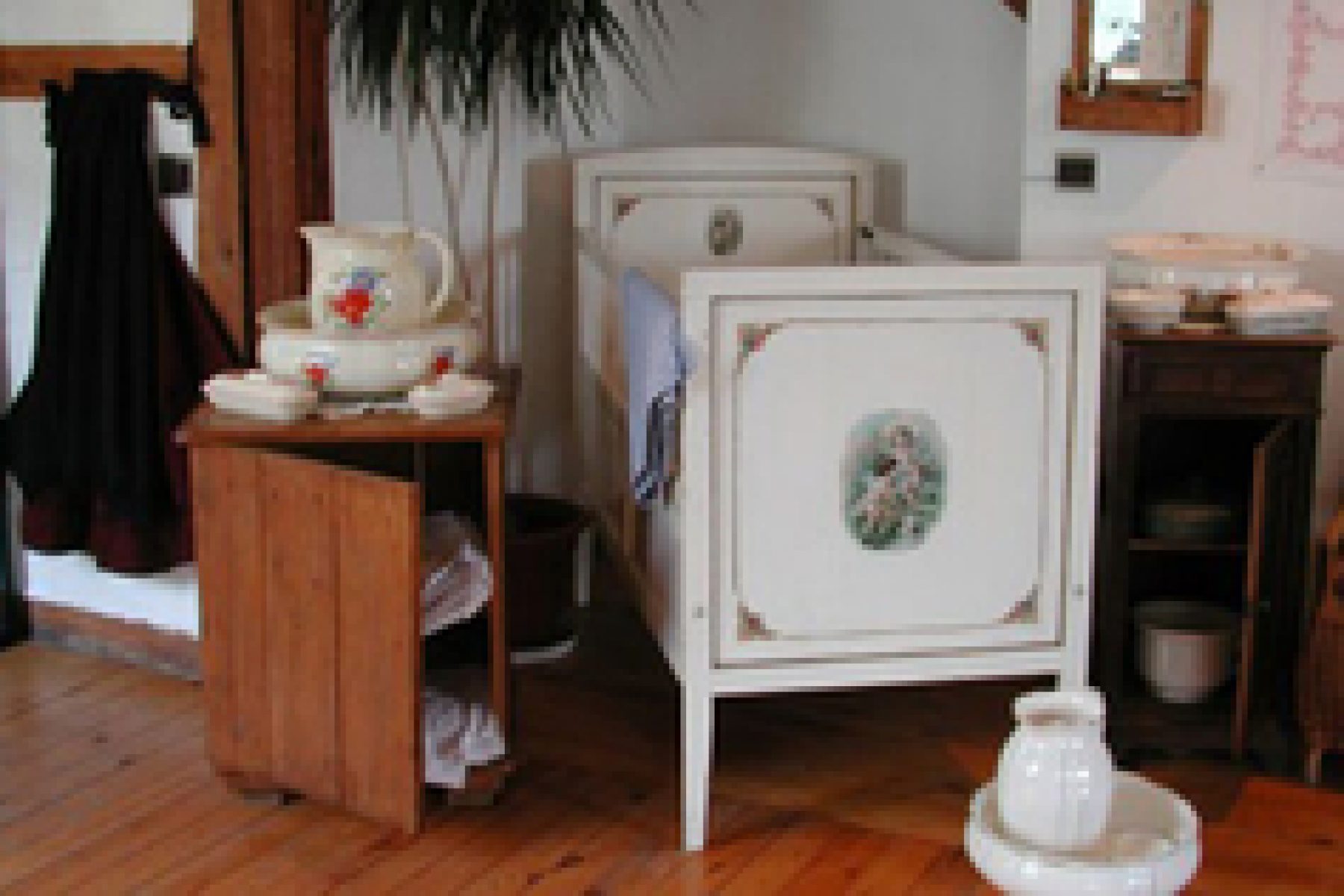
Local History Museum
In the museum you can see many objects that were once part of life in the countryside. All the articles that were used in the house, in agriculture, as well as in already forgotten professions, citizens provided as a loan to be able to put themselves back into the good old days.
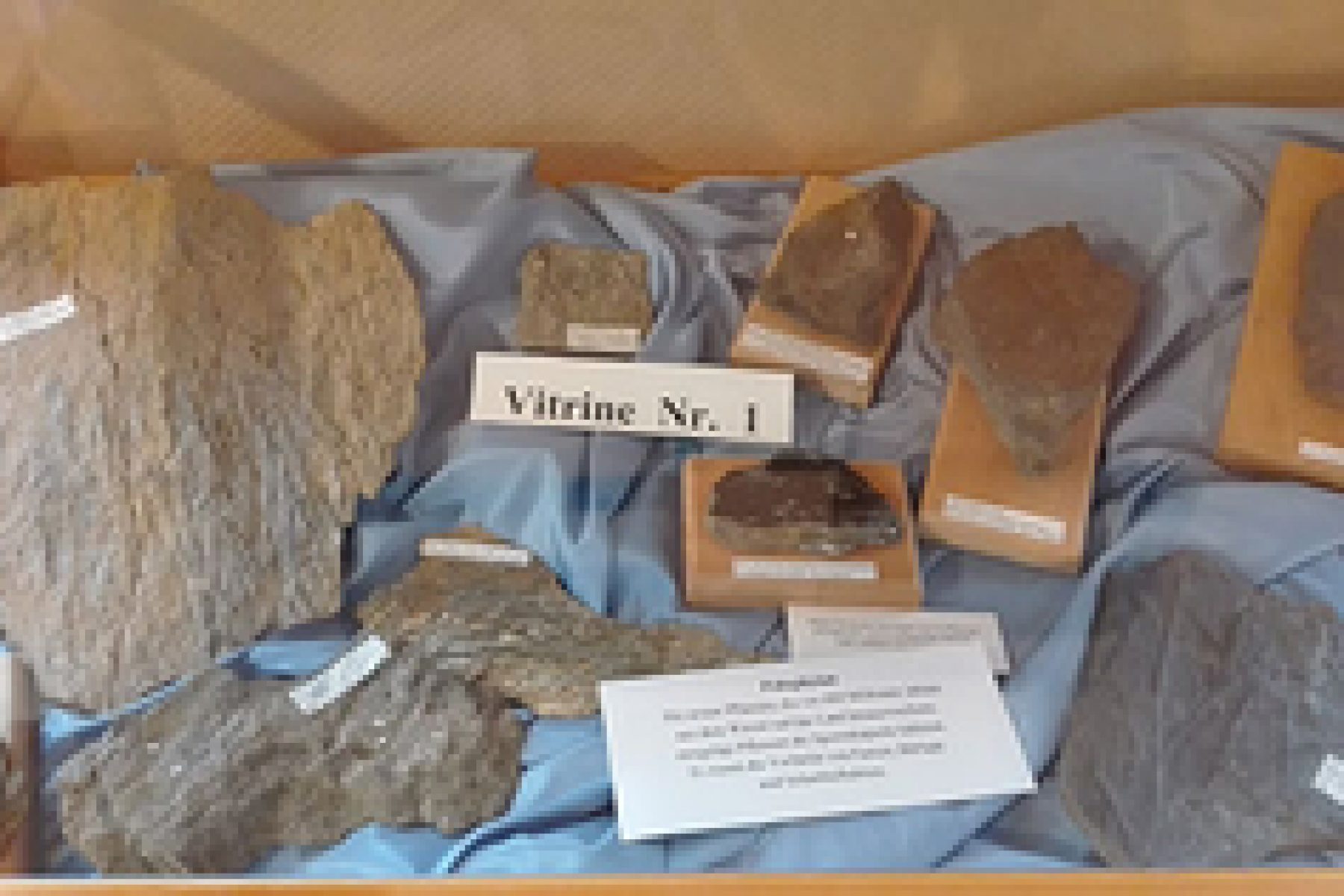
Life and Evolution
We are in the local region on a soil formed by marine deposits on the southern beach of the Stavelot-Hohes-Venn Massivs 395 million years ago.
This was in the geological age of the upper Lower Devonian.
Here, at the southern edge of the Stavelot-Hohes-Venn Massif, was a subtropical shallow sea with partly marshy coastal areas.
Some of the rich and diverse life of that time has been preserved as fossils!
A journey through the past
To preserve the tradition of house names in Burg-Reuland, the project “Journey into the Past” was launched.
A house is more than just a construction of materials; it is a home for people. A street name with a house number can register a building, but a house name reflects the history and uniqueness of a property. House names have been used to designate houses and their inhabitants since time immemorial, and they often remain, even when the owner changes. House names often have centuries-old roots and refer to the name or first name of a previous owner, to his trade, or to the field name.

